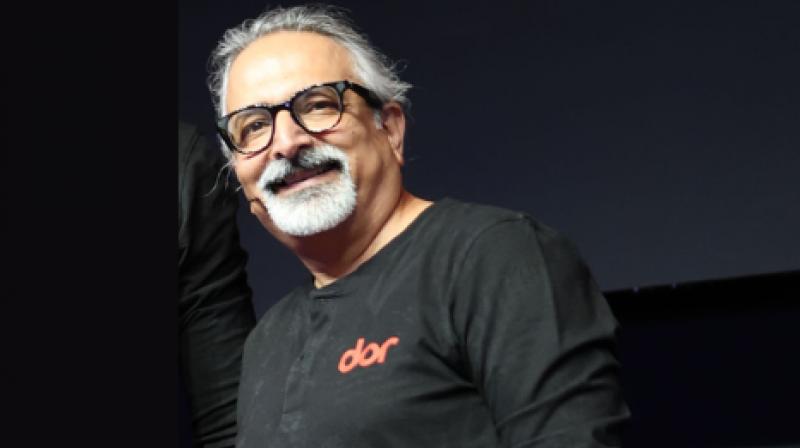The home entertainment landscape is shifting significantly as younger audiences increasingly favour subscription models over ownership.
Recognising this trend, Streambox Media, founded by Anuj Gandhi, has unveiled Dor, a subscription-based television service. Backed by Micromax Informatics and Stride Ventures, this TV service aims to revolutionise how Indian households access entertainment by combining technology with a seamless user experience.
Launching on 1 December 2024, through Flipkart, Dor integrates a 4K QLED TV with SVOD OTT platforms, AVOD platforms, live channels, gaming, and news into a single, affordable monthly subscription plan starting at INR 799.
Powered and designed by Dor OS, the service eliminates fragmented navigation across devices and offers hyper-personalisation through AI-powered content discovery.
With the connected TV (CTV) market in India poised to double from 50 million to 100 million households in five years, Dor intends to address the gaps of high upfront costs and fragmented services, making premium entertainment accessible to a wider audience.
During the launch event in Mumbai, we spoke with Anuj Gandhi, founder and CEO, Streambox Media, to learn about the research that led to the creation of Dor, along with marketing plans, strategies for attracting advertisers, and more...
Edited excerpts:
Since Dor is a new TV service, will any marketing campaigns be rolled out for the same and what does the plan look like?
We launched a teaser campaign on 26 November. The full campaign will be rolled out soon. We have partnered with several stand-up comedians to effectively spread the message and reach a wider audience. The campaigns for Dor were conceptualised by Dead Ant, while the others have been curated in-house by Streambox.
What consumer insights were taken into consideration before launching Dor?
We examined various ecosystems within the TV market, focusing on pricing and the democratisation of access. We conducted extensive research to identify the features that customers prioritise when buying a TV. Additionally, we explored the concept of 'TV as a service', specifically analysing the 'buy versus rent' model to determine whether it could become an acceptable norm for TV offerings.
We also investigated the pain points consumers experience related to content, consumption, and subscription services, aiming to enhance convenience in search and discoverability for users. Our focus groups specifically targeted tier 2 and tier 3 markets, as we observed that while most metropolitan areas have connected TVs (CTVs) and large-screen TVs, these account for only about 25% of the overall market.
What challenges emerged when collaborating with different broadcast and OTT platforms?
All broadcasters and OTT players have been highly supportive, recognising that this market is beginning to scale. Viewership is increasingly shifting toward large screens. In India, the subscription video on demand (SVOD) and OTT business initially started on mobile screens. However, during the Covid-19 pandemic, viewership declined on mobile, and television became the preferred medium. Now, there is a growing focus on connected TVs (CTVs) and landing pages for marketers.
Given that it has taken time to reach this momentum, we are pleased to have launched at an opportune moment, right as the market transitions from 50 million to 100 million viewers. Our goal is to facilitate this transition within two years instead of the projected three, by leveraging the pricing strategies we have introduced in the market. We aim to capitalise on this growth wave.
Having witnessed the evolution of media consumption firsthand, as you have worked with traditional broadcasting companies like DEN, how will the learnings from your experiences be implemented in this new home entertainment venture?
For me, the primary goal is to make things convenient for the customer. With cable TV, everything was included, and viewers didn't have to think much about it. This same concept should apply to streaming services. Recently, someone tweeted about combining all streaming services and reinventing cable, and I believe we are right at the forefront of this innovation.
Additionally, I want to build momentum around large TVs as a service. If we examine Apple as a brand and its success story in India, we see that it revolves around easy EMI options and overall convenience. Why can't we apply the same strategy to a 65-inch TV? We aim to make the price competitive while offering bundled services, all with simplicity at the core of our approach.
How will the business effectiveness and KPIs be measured for Dor?
Our focus is clearly on numbers and sales, which is quite straightforward. It all revolves around the units that can be sold in the market. That's why we have partnered with Flipkart to gather this data. We have done our part in creating the product; now the responsibility lies with the sales team.
Regarding advertisers, will they be able to benefit from the landing page?
We have an inventory banner on our landing page and are exploring ways to monetise it. However, this is not our top priority at this initial phase. The advertising market is highly competitive, focusing heavily on metrics and CPMs. Therefore, we want to maintain the exclusivity of being a subscription-led service. Once we achieve the necessary numbers, we will consider onboarding more advertisers and selling our ad banners on the landing page.
Lastly, what distinguishes Dor from its competitors?
We are not just selling a TV; we are offering a TV as a service, fostering a lifelong relationship with our customers, which sets Dor apart.

.gif)










